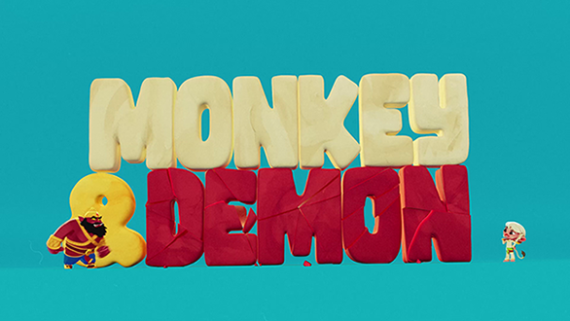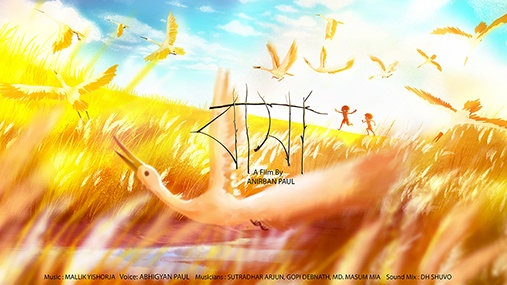Animating Chaos: The Creative World of Anirban Paul
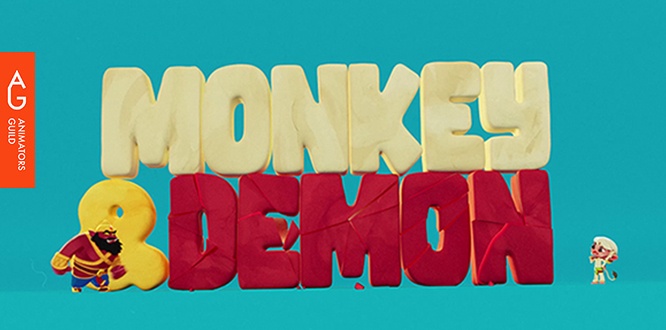
“Demon & Monkey started as a simple sketch and quickly grew into a full-blown idea; a slapstick reimagining of two legendary figures constantly at odds.”, says Anirban Paul, the Kolkata-based animator and co-founder of Zoetrope Animation Studios. Having worked on internationally acclaimed short films like Devi and Basha, this new series by Anirban is a chaotic comedy, blending mythology with absurdity in ways few would have imagined.
As a child, Anirban was constantly drawing, creating, and even immersed himself into animated shows. He realized early on that animation wasn’t just entertainment—it was someone’s labor and imagination at work. That understanding grew into curiosity, which soon turned into a deep passion.
“I was always drawing as a kid. I watched cartoons obsessively, but it wasn’t just the characters—I was realizing someone was behind those drawings, giving them life.”


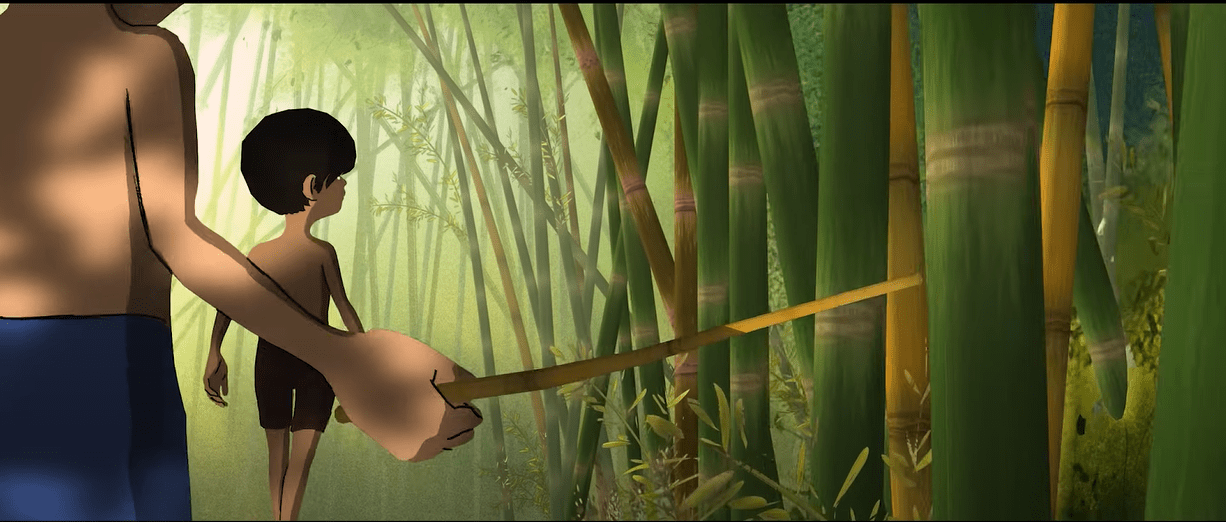
Still from Anirban’s internationally acclaimed film Basha(2024)
After nearly a decade of working in the industry Anirban felt the need to do something different. Alongside a small group of friends, he co-founded Zoetrope Animation Studios LLP, a space that valued the heart over anything.
They were working out of a modest setup in Kolkata, often animating late into the night after long day jobs. Their goal wasn’t to chase commercial success—it was to remain honest. They chose stories that mattered, stories that surprised, and stories that hadn’t been told yet. Zoetrope was functioning less like a business and more like a creative lab, where experimentation was the rule, not the exception.
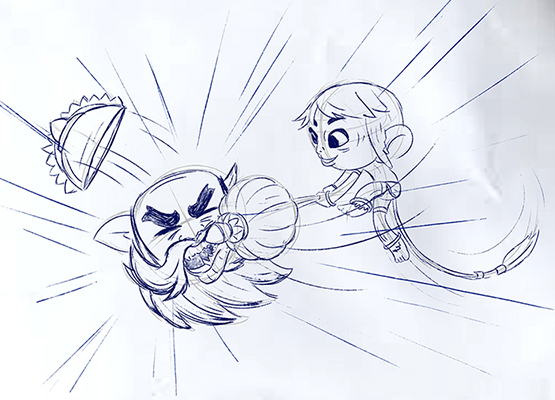
First sketch of Demon & Monkey
The idea for Demon & Monkey formed during a casual sketching session—Anirban was drawing characters inspired by Hanuman and Ravan, but imagining them not as enemies, but as oddball companions. What if ego met innocence? What if rebellion was paired with pure instinct?
That seed of an idea grew into this reimagined mythology—one where legendary figures weren’t locked in epic battles but were locked in absurd situations, forced to work together, and constantly outwit (or out-annoy) each other.

From there, Monkey & Demon took shape as a fast-paced, absurd, and hilarious reimagining of an ancient rivalry where the stakes are ridiculous, the gags are wild, and the chaos never ends.
Ravan was becoming the intellectual mess; brilliant, overconfident, always failing. Hanuman was instinctive, unpredictable, and full of mischief. They were opposites, and that made the comedy feel endless
Anirban explored a new treatment—one that merged the freedom of 2D with the dynamic range of 3D. He was animating scenes in 3D to allow complex camera movement, then painting over them frame by frame to retain that handcrafted, 2D aesthetic.

“I love the charm of 2D. But I wanted more flexibility, more texture. That’s where the hybrid came in.”
It was an unconventional workflow, but it served the tone of the series perfectly. Shows like Arcane and Spider-Man: Into the Spider-Verse influenced him, not just visually, but philosophically—they were proving that visual languages could evolve, and that animation could wear multiple hats at once.
He says,” To achieve a unique painterly look, I used 3D animation as a base and painted over it frame by frame. Since there’s no dialogue, everything had to be told through expression, movement, and comic timing.”
It was definitely an experimental process mixing tools, adjusting frame rates, and playing with textures but that’s what made it exciting
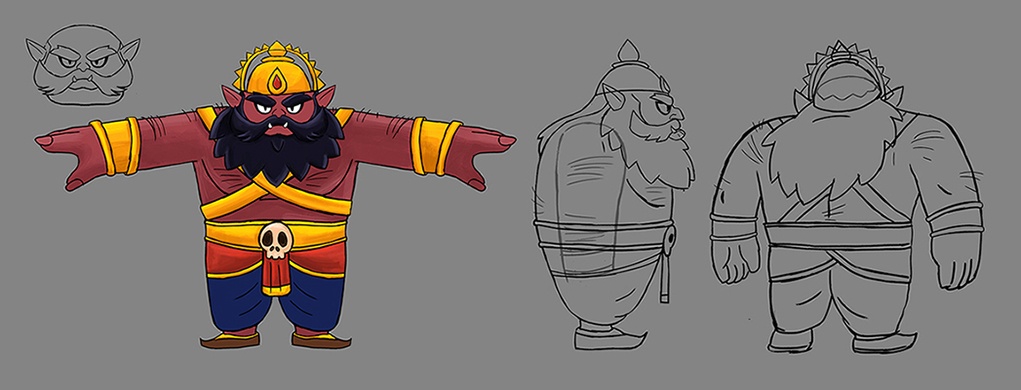
Character Sheet for the Demon
The character design for Monkey & Demon was all about building contrast not just visually, but in energy and attitude.
One of the biggest challenges Anirban faced was balancing the painterly look he envisioned with the limited time and resources available. Since he was handling everything—from animation to final compositing—the workload was intense. Without dialogue, the humor had to rely entirely on expressions and timing, which required constant trial and error.
He approached this by breaking the project into manageable goals and staying open to reworking scenes. In the end, those small adjustments made a big impact.

Inspired by Ravan, he[the Demon] has ten heads but in my version, each head has its own personality.
The Demon was wide, stiff, overly composed—his ten heads often argued amongst themselves, acting like a dysfunctional committee. Each head had its own personality, and together, they were often his own worst enemy.
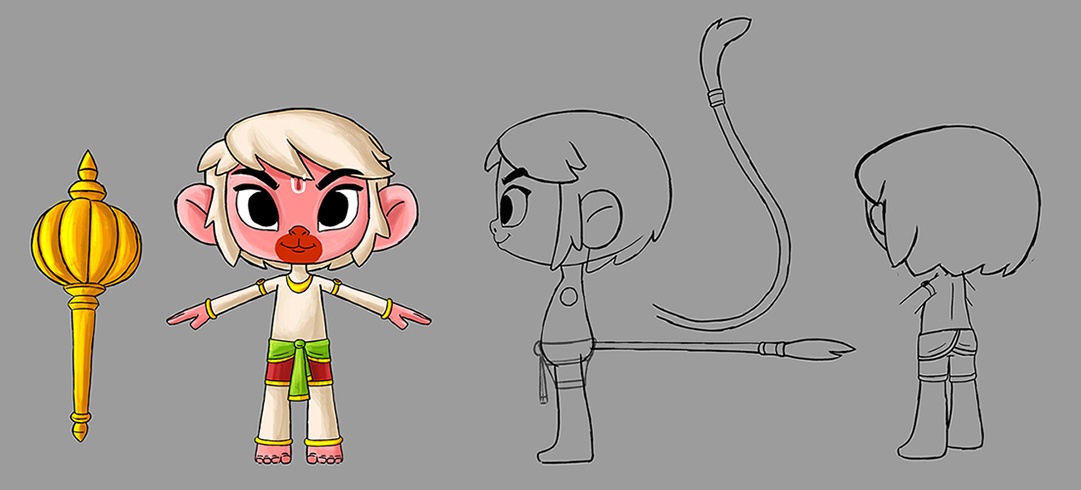
Character Sheet for the Monkey
The Monkey, meanwhile, was a burst of kinetic energy—smaller, faster, with big expressive eyes and no filter between thought and action. Where the Demon was planning, the Monkey was leaping.
Where the Demon is rigid and proud, the Monkey is fluid and instinctive he never plans, he just does. That unpredictability is what makes him so fun and so frustrating for the Demon.
Anirban says,” Their designs evolved as the tone of the show became more comedic. Every gag helped shape their personalities more clearly. They’re total opposites, locked in a loop.”

Demon & Monkey wasn’t backed by a hefty budget. Anirban was developing the story, designing the characters, animating every movement, and compositing each frame. The character modeling and rigging were handled by a collaborator, but the rest of the production unfolded with Anirban’s hardwork.
It was an intense but rewarding solo journey from scribbles to screen all driven by the chaos and charm of these two characters.
There were moments during production that Anirban explains as especially challenging. One scene involved all ten of the Demon’s heads reacting differently at once. Keeping that clear, funny, and readable took hours of trial and error. But these moments became crowd favorites—and for Anirban, they were lessons in timing, clarity, and comedic rhythm.

The first episode of Demon & Monkey was premiered on YouTube and recieved a warm response. Audiences were connecting with the visuals, the characters, and the humor—despite the absence of words.
“What surprised me most was how quickly people were connecting with them. Without dialogue, they were still choosing favorites and quoting moments.”

Encouraged by the feedback, Anirban continues to develop new episodes. He is planning to build the series into a recurring gag format, experimenting with new animation styles for each story.
“Each project is a way to grow. Not just in skill, but in how I think, how I see. That’s what keeps me going.”
Through Demon & Monkey, Anirban discovered new things about his craft—and about himself. He learned how to trust his instincts, how to let humor speak without words, and how limitation could often be the most powerful creative tool.
Anirban says,” Alongside that, I’m also working on a script for an animated feature, which is an exciting challenge I’m eager to explore.”
As he continues to build stories from the sketchbook to the screen, Anirban Paul reminds us that mythology doesn’t need to be solemn—and that sometimes, the best way to retell an epic is with a mischievous monkey, a stubborn demon, and a whole lot of mayhem.
On that note, we come to end of this feature. We thank Anirban for his time and wish him all the very best for the future.
You can reach out to him on the channels below.

Anirban Paul

